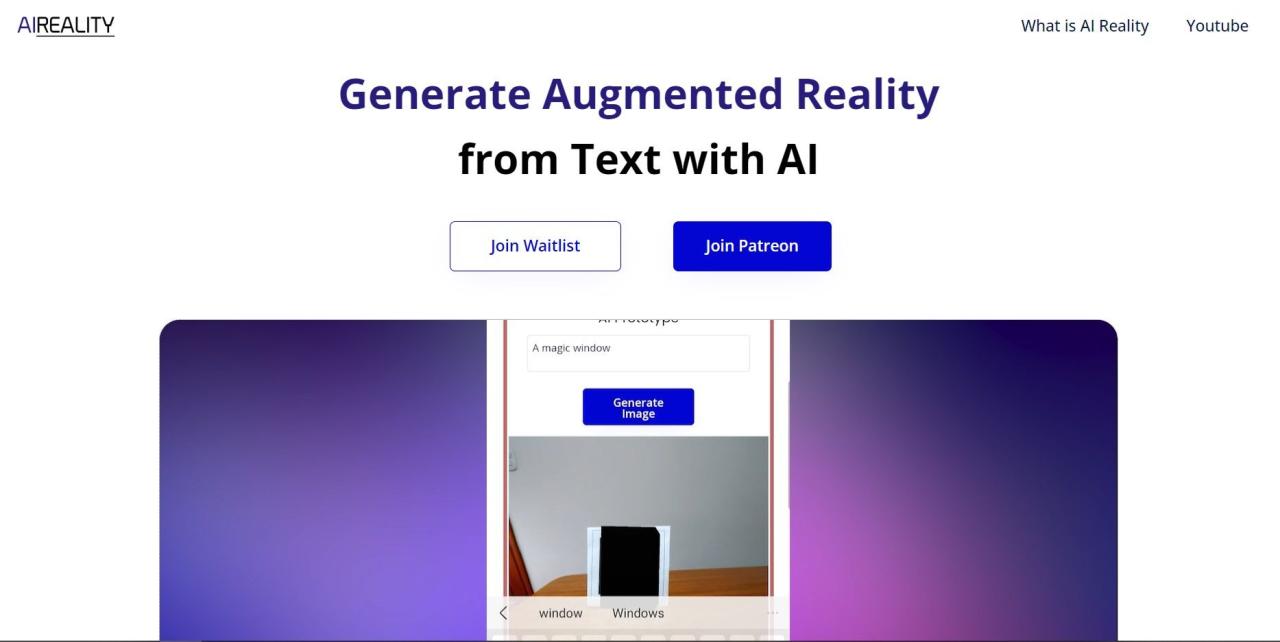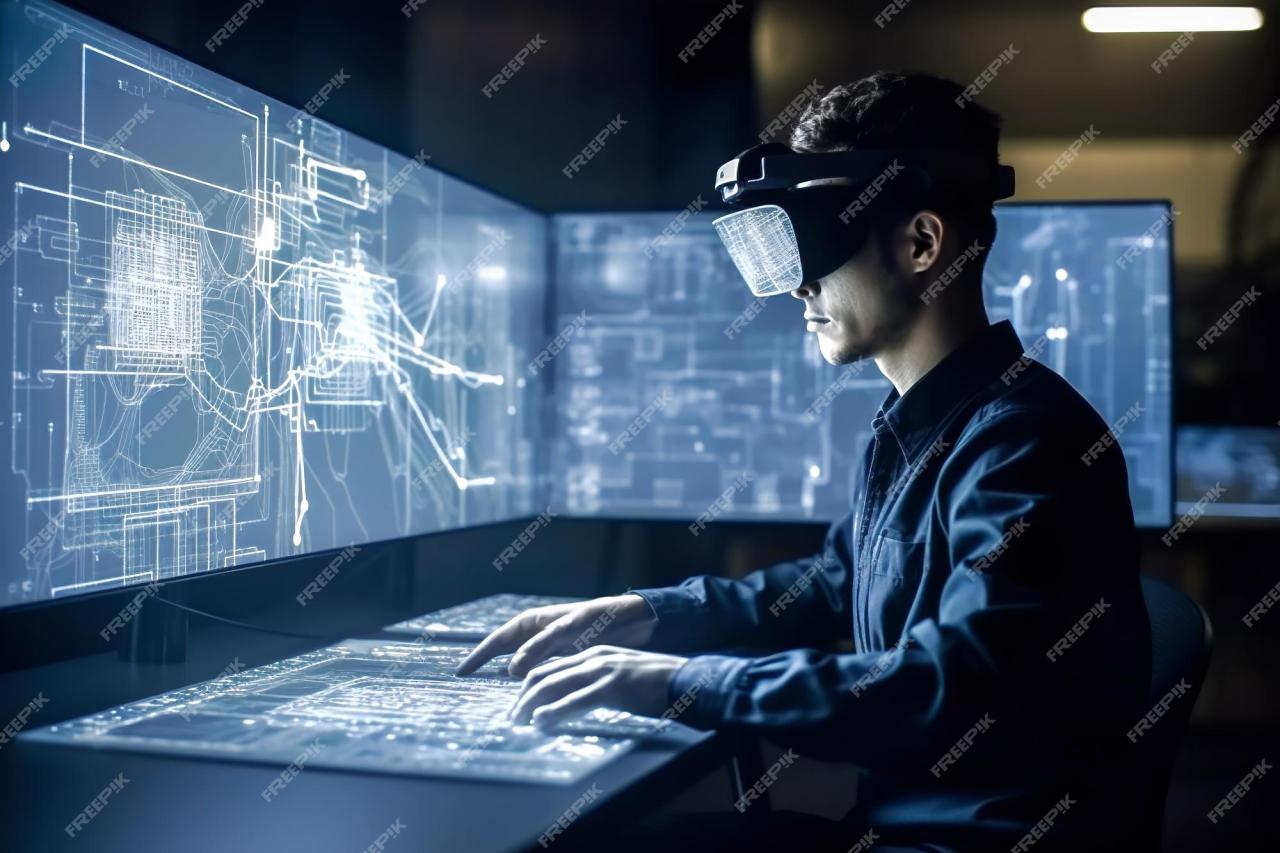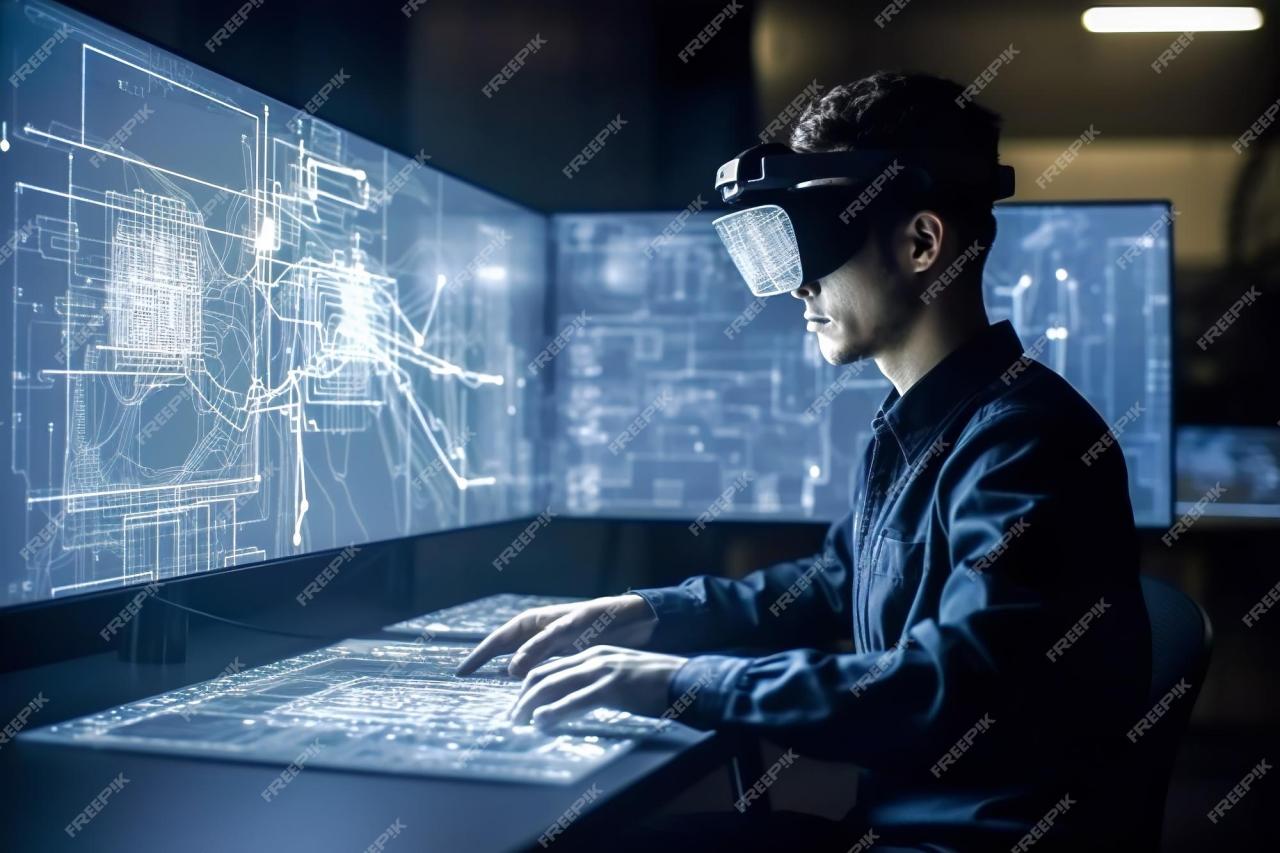Reality AI Lab pushes the boundaries of artificial intelligence, creating hyperrealistic simulations that blur the line between the digital and physical worlds. We explore cutting-edge technologies to develop AI capable of generating incredibly lifelike visuals and interactions, opening up incredible possibilities across various sectors. This exploration delves into the exciting applications, ethical considerations, and future potential of this groundbreaking field.
From revolutionizing gaming and film production to transforming medical training and urban planning, Reality AI Lab’s work promises to reshape how we interact with technology and understand our world. We’ll examine the innovative techniques used to achieve this realism, addressing both the incredible potential and the inherent challenges and ethical considerations involved in creating such powerful technology.
Reality AI Lab’s cutting-edge research often relies on stable, high-speed internet connections. To ensure optimal performance, you’ll want to know which frequency band your iPhone is using; check this easily by following the instructions at how to check your wifi ghz on iphone. Knowing your WiFi GHz helps Reality AI Lab researchers troubleshoot connectivity issues and maximize data transfer speeds for their complex simulations.
Reality AI Lab: Creating Realistic AI Simulations
Reality AI Lab is a hypothetical research facility dedicated to pushing the boundaries of artificial intelligence in creating hyperrealistic simulations. Our mission is to develop and refine AI technologies capable of generating incredibly lifelike virtual environments and interactions, impacting various sectors from entertainment to healthcare.
Reality AI Lab focuses on advanced AI applications, and understanding the real-world implications is key. One area demanding attention is the increasing number of unexplained drone sightings globally; check out this comprehensive report on drone sightings around the world to see the scale of the issue. This data is invaluable for Reality AI Lab’s research into autonomous systems and potential security threats.
Core Mission and Goals of Reality AI Lab
The core mission of Reality AI Lab centers around developing cutting-edge AI technologies that can create seamless and believable virtual realities. This involves not only generating realistic visuals but also crafting believable AI agents with complex behaviors and interactions. Key goals include advancing the state-of-the-art in AI simulation, fostering ethical development, and facilitating the adoption of this technology across diverse industries.
Potential Areas of Research and Development
Reality AI Lab’s research spans several key areas. These include developing advanced rendering techniques for photorealistic visuals, creating sophisticated AI agents capable of natural language processing and complex decision-making, designing intuitive interfaces for interacting with virtual environments, and exploring the ethical implications of highly realistic AI simulations.
Potential Impact on Various Industries
The potential impact of Reality AI Lab’s work is far-reaching. Highly realistic AI simulations can revolutionize training and education, offering immersive and engaging learning experiences. In entertainment, they can enhance gaming and film production, creating more immersive and interactive experiences for consumers. Architectural visualization and urban planning can benefit from the ability to create realistic simulations of proposed designs, allowing for better evaluation and public engagement.
Reality AI Lab’s focus is on developing cutting-edge AI solutions, and sometimes even the most advanced tech needs a reliable connection. Think about needing to upload large datasets; you wouldn’t want to be stuck without internet, right? That’s why knowing about the connectivity options, like checking out the bc ferries wifi before your next trip, can be crucial for researchers working on projects with tight deadlines.
Back to Reality AI Lab, this kind of practical consideration is important for ensuring project success.
Technologies Employed by Reality AI Lab
Creating realistic AI simulations requires a multifaceted technological approach. Several key technologies are crucial to achieving lifelike visuals and believable interactions.
Key Technologies Used in Creating Realistic AI Simulations
Reality AI Lab utilizes a combination of advanced technologies, including deep learning models for image generation (like GANs and diffusion models), physics engines for realistic simulations of physical phenomena, natural language processing (NLP) for realistic dialogue and interactions, and advanced rendering techniques for photorealistic visuals. Furthermore, procedural generation algorithms are employed to create vast and diverse virtual environments efficiently.
Comparison of AI Models for Generating Realistic Visuals and Interactions
Different AI models offer unique strengths and weaknesses. Generative Adversarial Networks (GANs) excel at generating high-quality images, but can be challenging to train and control. Diffusion models are emerging as a powerful alternative, offering greater control and potentially higher fidelity. For AI agents, reinforcement learning is often used to train agents to exhibit complex behaviors and decision-making capabilities.
The choice of model depends heavily on the specific application and desired level of realism.
Ethical Considerations Related to the Technologies Employed
The development and deployment of highly realistic AI simulations raise several ethical concerns. These include the potential for misuse in creating deepfakes or other forms of misinformation, the impact on human perception and understanding of reality, and the need to ensure fairness and avoid bias in the algorithms used to generate AI agents and environments. Reality AI Lab is committed to responsible AI development and actively researches and mitigates these ethical challenges.
Applications of Reality AI Lab’s Research
The applications of Reality AI Lab’s research are diverse and impactful across multiple industries. Here are a few key examples.
Applications in the Gaming Industry
Reality AI Lab’s technology can significantly enhance gaming experiences by creating highly realistic game worlds and non-player characters (NPCs) with sophisticated behaviors. This results in more immersive and engaging gameplay, blurring the lines between the virtual and real worlds. Imagine open-world games with incredibly detailed environments and AI characters that react dynamically to player actions.
Applications in Film and Animation Production
The technology allows filmmakers and animators to create realistic virtual sets and characters, reducing production costs and expanding creative possibilities. This could lead to more realistic special effects, virtual actors, and interactive storytelling experiences. Imagine creating a film with a completely virtual world, populated by AI-generated characters and environments.
Applications in Architectural Visualization and Urban Planning

Architects and urban planners can use Reality AI Lab’s technology to create photorealistic visualizations of proposed buildings and urban spaces. This allows stakeholders to experience and evaluate designs in a more immersive and engaging way, facilitating better decision-making and public participation. Imagine walking through a virtual model of a new city development, interacting with the environment and providing feedback.
| Application | Technology Used | Benefits | Challenges |
|---|---|---|---|
| Gaming | GANs, physics engines, reinforcement learning, NLP | Increased immersion, realistic NPCs, dynamic environments | Computational cost, ethical concerns about AI agents |
| Film & Animation | GANs, diffusion models, motion capture, advanced rendering | Reduced production costs, expanded creative possibilities, realistic effects | High computational demands, challenges in achieving photorealism |
| Architectural Visualization & Urban Planning | 3D modeling, ray tracing, AI-powered design tools | Improved stakeholder engagement, better design evaluation, realistic simulations | Data acquisition, model accuracy, computational complexity |
Challenges and Limitations of Reality AI Lab’s Work
Despite the significant potential, creating truly realistic AI simulations faces several challenges.
Technical Limitations in Creating Truly Realistic AI Simulations
Achieving photorealism and believable AI behavior remains a significant technical challenge. Generating highly detailed environments and complex interactions requires substantial computing power and advanced algorithms. Furthermore, accurately simulating human behavior and emotions remains a complex problem.
Ethical Challenges Associated with the Realistic Generation of Human-like AI
The creation of human-like AI raises ethical concerns about potential misuse, such as creating deepfakes or manipulating individuals. The potential for bias in AI algorithms and the impact on human perception and understanding of reality are also important considerations.
Potential Societal Impact of Highly Realistic AI Simulations
Highly realistic AI simulations have the potential for both positive and negative societal impacts. On the positive side, they can revolutionize training, education, and entertainment. However, concerns exist about job displacement due to automation, the spread of misinformation through deepfakes, and the potential for social manipulation.
Future Directions for Reality AI Lab

Reality AI Lab envisions a future where AI-generated simulations are seamlessly integrated into various aspects of life. This requires continued research and development, as well as collaboration with other organizations.
Potential Roadmap for Future Development and Research
- Advancements in AI model development to improve realism and efficiency.
- Development of more sophisticated AI agents capable of complex interactions and decision-making.
- Exploration of new applications in healthcare, education, and other fields.
- Focus on ethical considerations and responsible AI development.
Potential Collaborations with Other Research Institutions or Companies, Reality ai lab
- Collaboration with leading universities in computer science and AI.
- Partnerships with game developers and film studios to integrate the technology into their products.
- Joint ventures with companies in the healthcare and architectural visualization industries.
Vision Statement for Reality AI Lab
- To be a global leader in the development and application of realistic AI simulations.
- To create technology that benefits society while addressing ethical concerns.
- To foster innovation and collaboration in the field of AI.
- To push the boundaries of what is possible with AI and create immersive and engaging experiences.
Illustrative Examples of Reality AI Lab’s Work

Here are some examples showcasing the potential applications of Reality AI Lab’s technology in different sectors.
Medical Training Simulation
Imagine a surgical training simulation where a trainee operates on a virtual patient with lifelike anatomy and physiology. The simulation uses haptic feedback to mimic the feel of real tissues and organs, while AI agents provide real-time feedback and guidance. The environment is highly realistic, incorporating realistic lighting, sounds, and even the subtle movements of the patient’s body. The learning outcome is a more realistic and effective training experience compared to traditional methods.
Virtual Tourism Application
A virtual tour of ancient Rome, generated using Reality AI Lab’s technology, would allow users to explore the city as it was centuries ago. The level of realism is astounding, with detailed architectural models, realistic lighting and shadows, and AI-generated crowds of people going about their daily lives. Users can interact with the environment, explore buildings, and even talk to virtual citizens, creating a truly immersive and educational experience.
Virtual Therapy Application

A virtual therapy session might involve a patient interacting with a realistic AI-generated therapist in a calming virtual environment. The therapist, powered by advanced NLP and emotional AI, can engage in empathetic conversations, offering support and guidance. The virtual environment can be customized to the patient’s needs, offering a safe and comfortable space for therapy. This approach could provide more accessible and convenient mental health support.
Wrap-Up
Reality AI Lab represents a significant leap forward in AI technology, promising to revolutionize numerous industries and redefine our relationship with simulated realities. While challenges remain in terms of ethical considerations and technical limitations, the potential benefits are immense, ranging from advancements in healthcare and education to fostering new forms of artistic expression and urban design. The journey ahead is filled with exciting possibilities as we continue to explore the potential of this transformative technology.
Commonly Asked Questions
What makes Reality AI Lab’s simulations different?
Our focus is on achieving unprecedented levels of realism, not just in visuals, but also in interactive behaviors and responses within the simulated environment.
How is Reality AI Lab addressing ethical concerns?
We have a dedicated ethics committee that proactively addresses potential biases and misuse of the technology, ensuring responsible development and deployment.
What kind of data does Reality AI Lab use?
We utilize diverse datasets, prioritizing privacy and security while ensuring the accuracy and realism of our simulations. Specific data sources are carefully vetted and anonymized where appropriate.
Is Reality AI Lab open to collaborations?
Absolutely! We actively seek partnerships with researchers, institutions, and companies who share our vision for responsible AI innovation.
